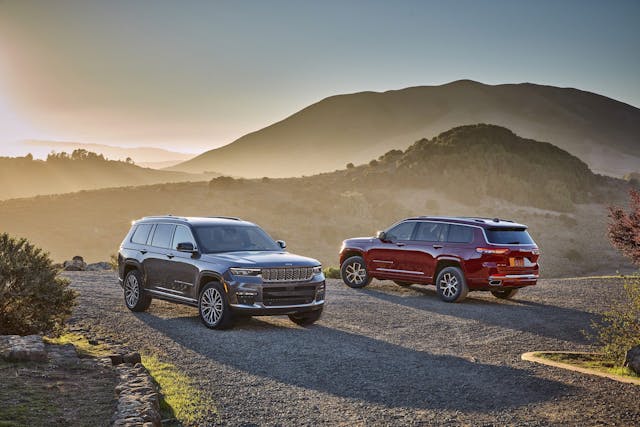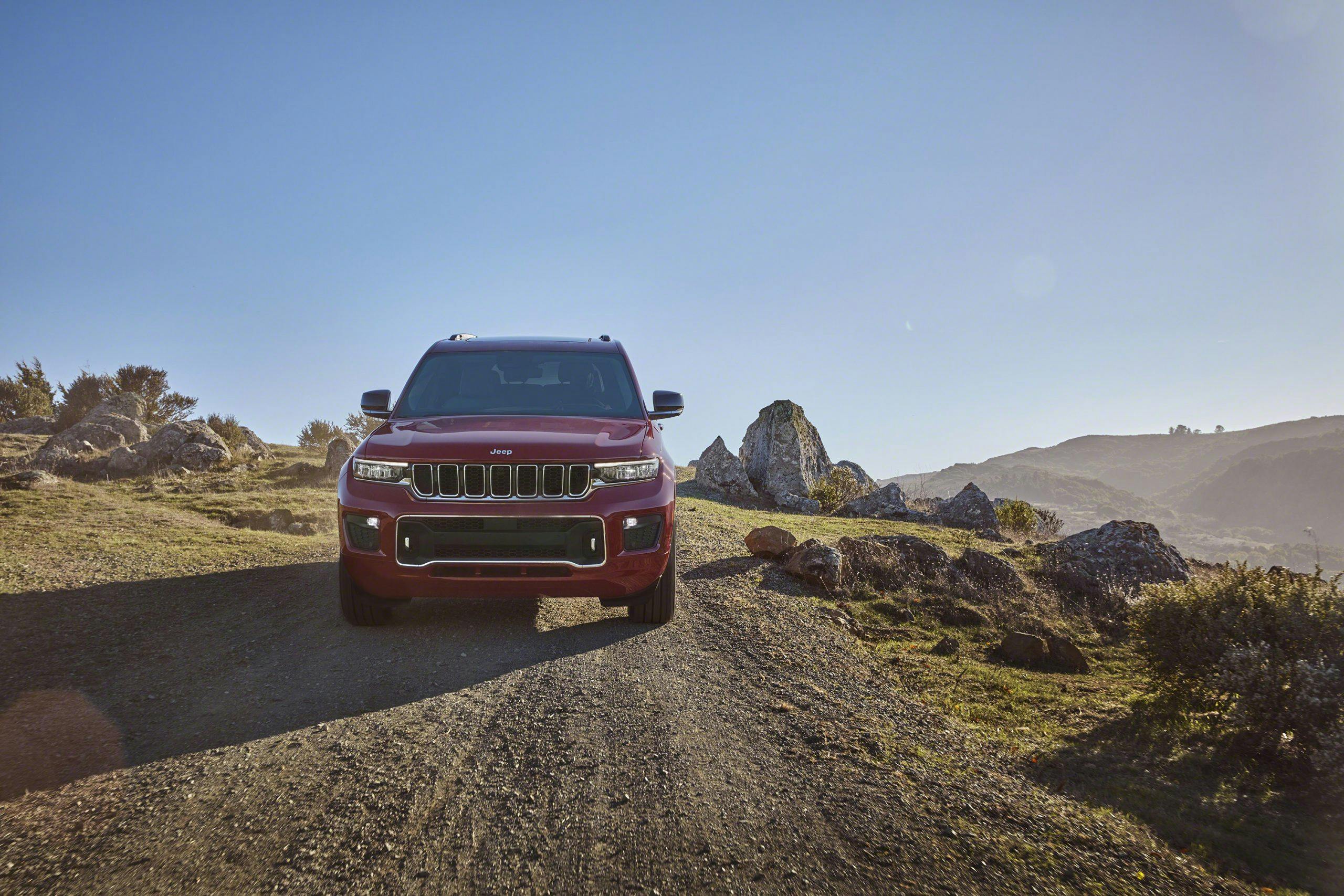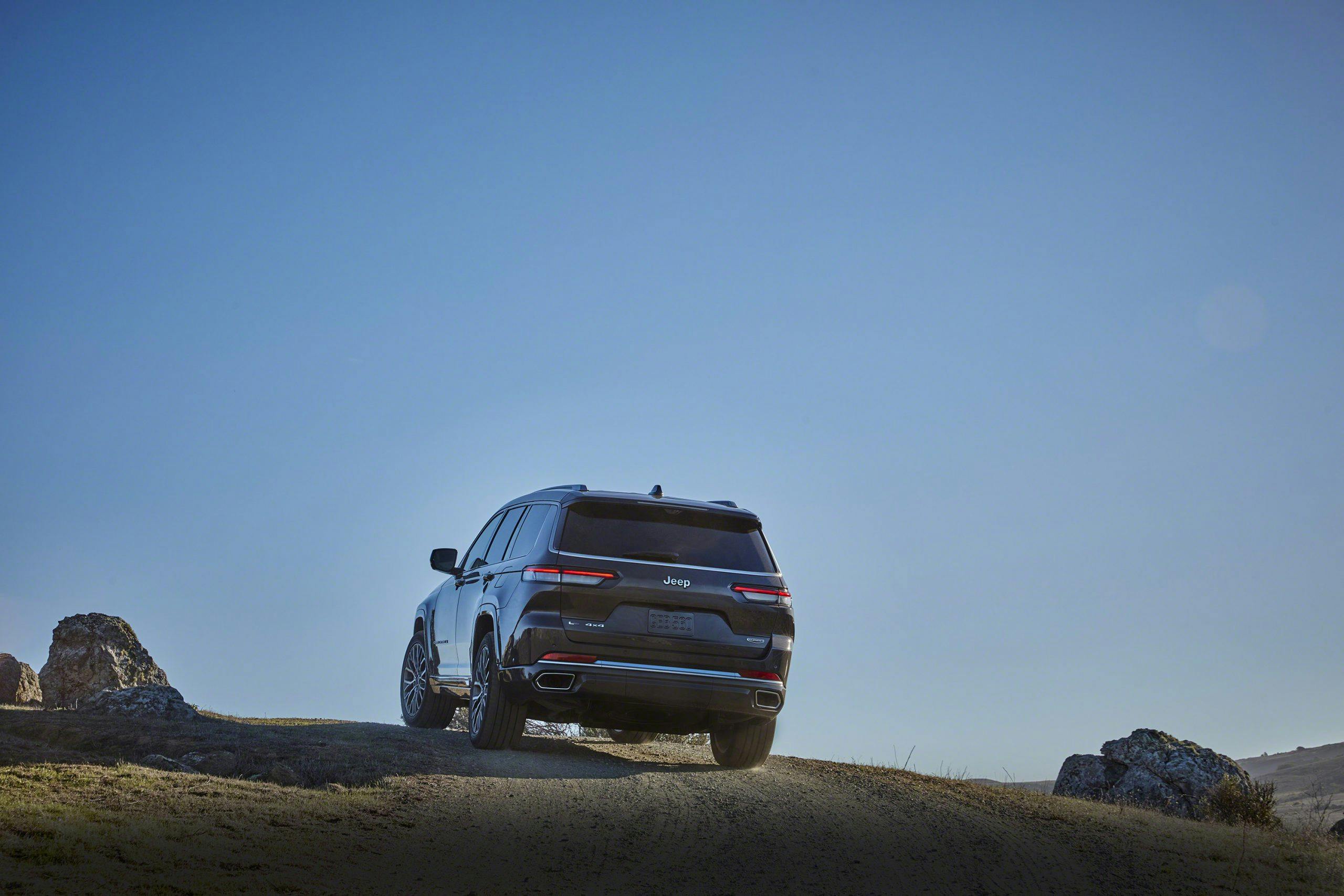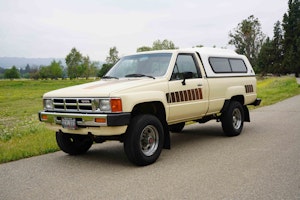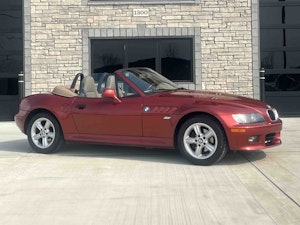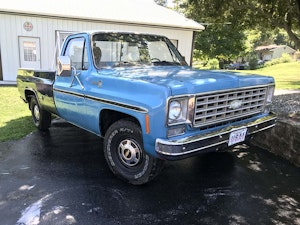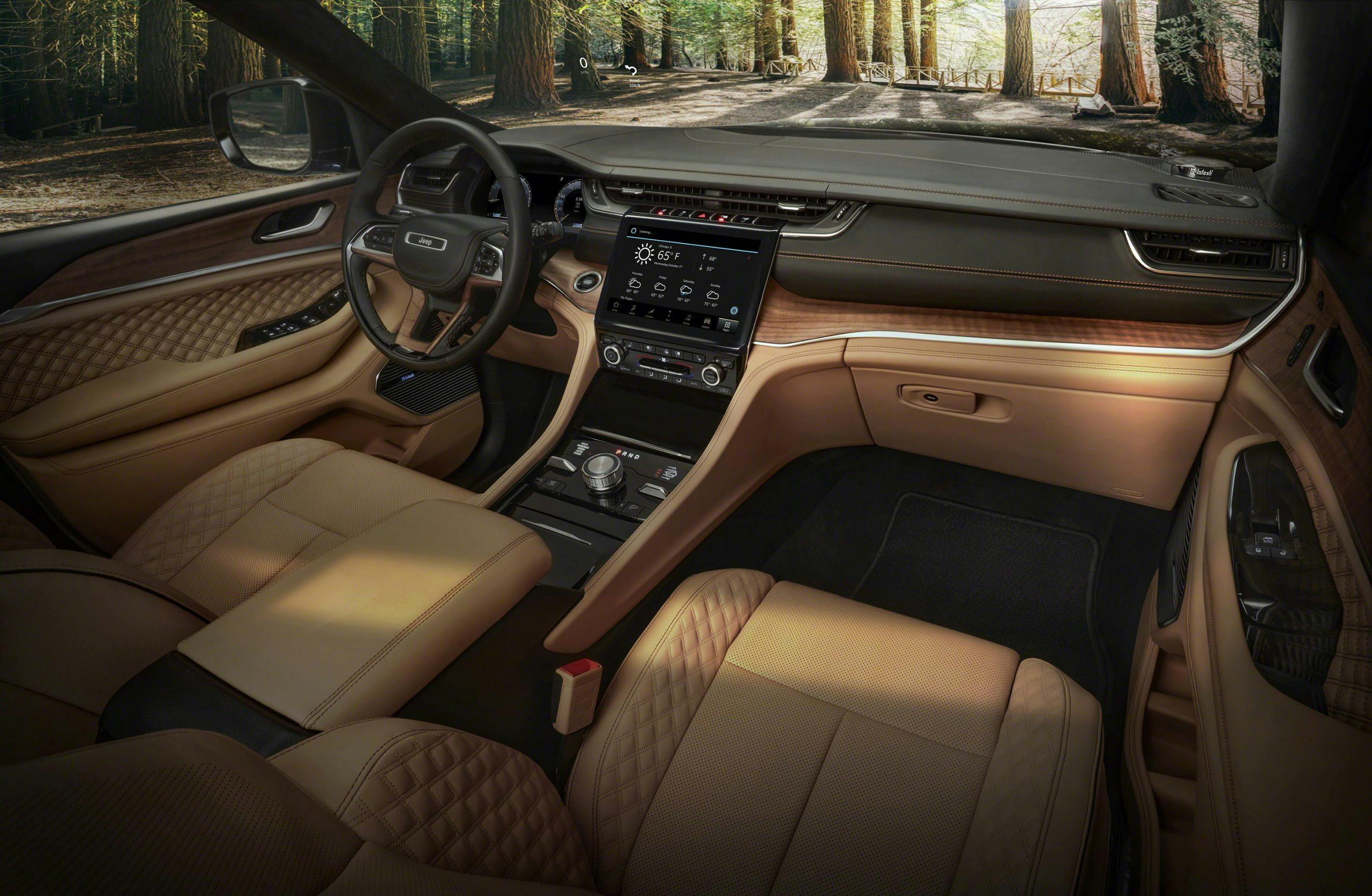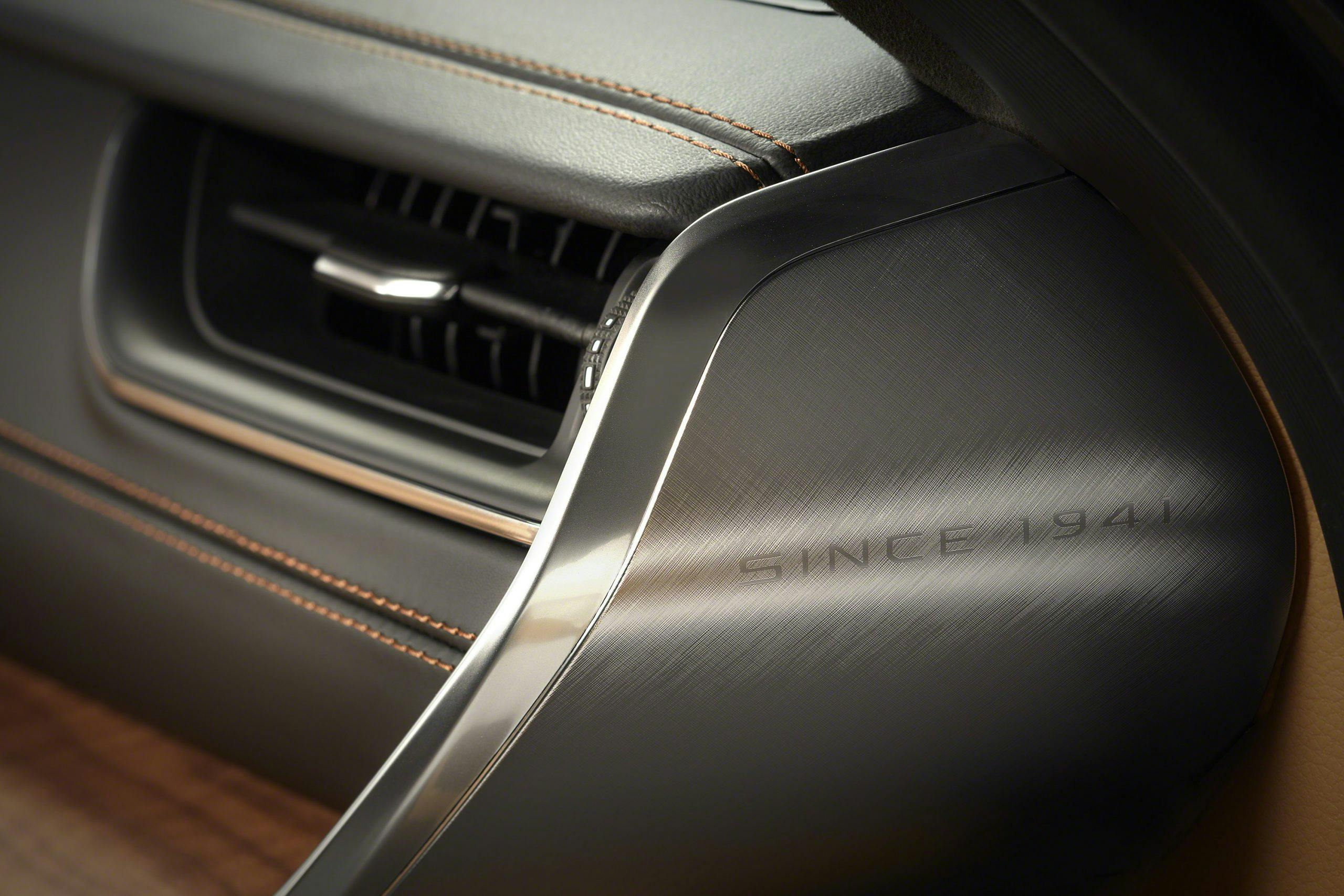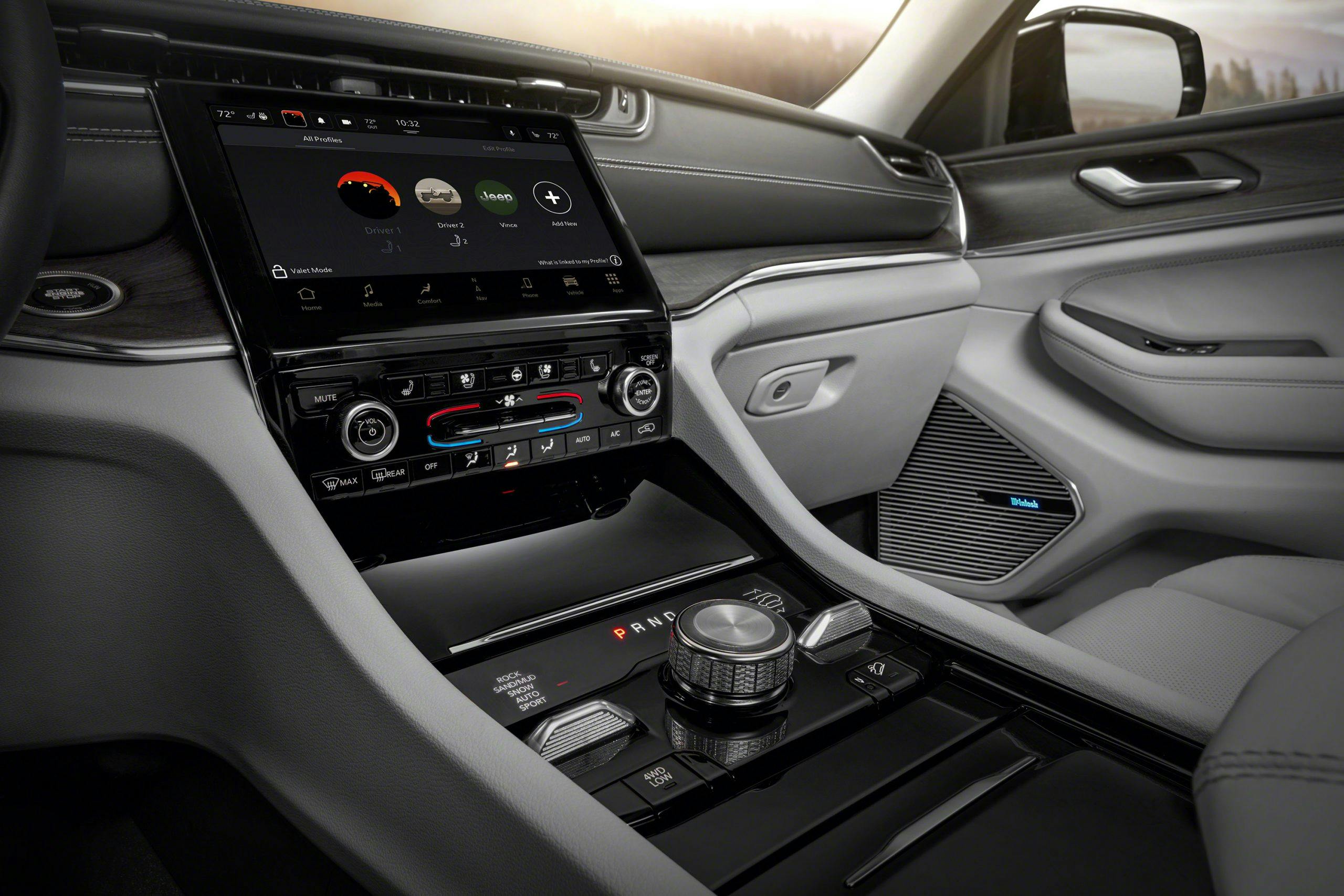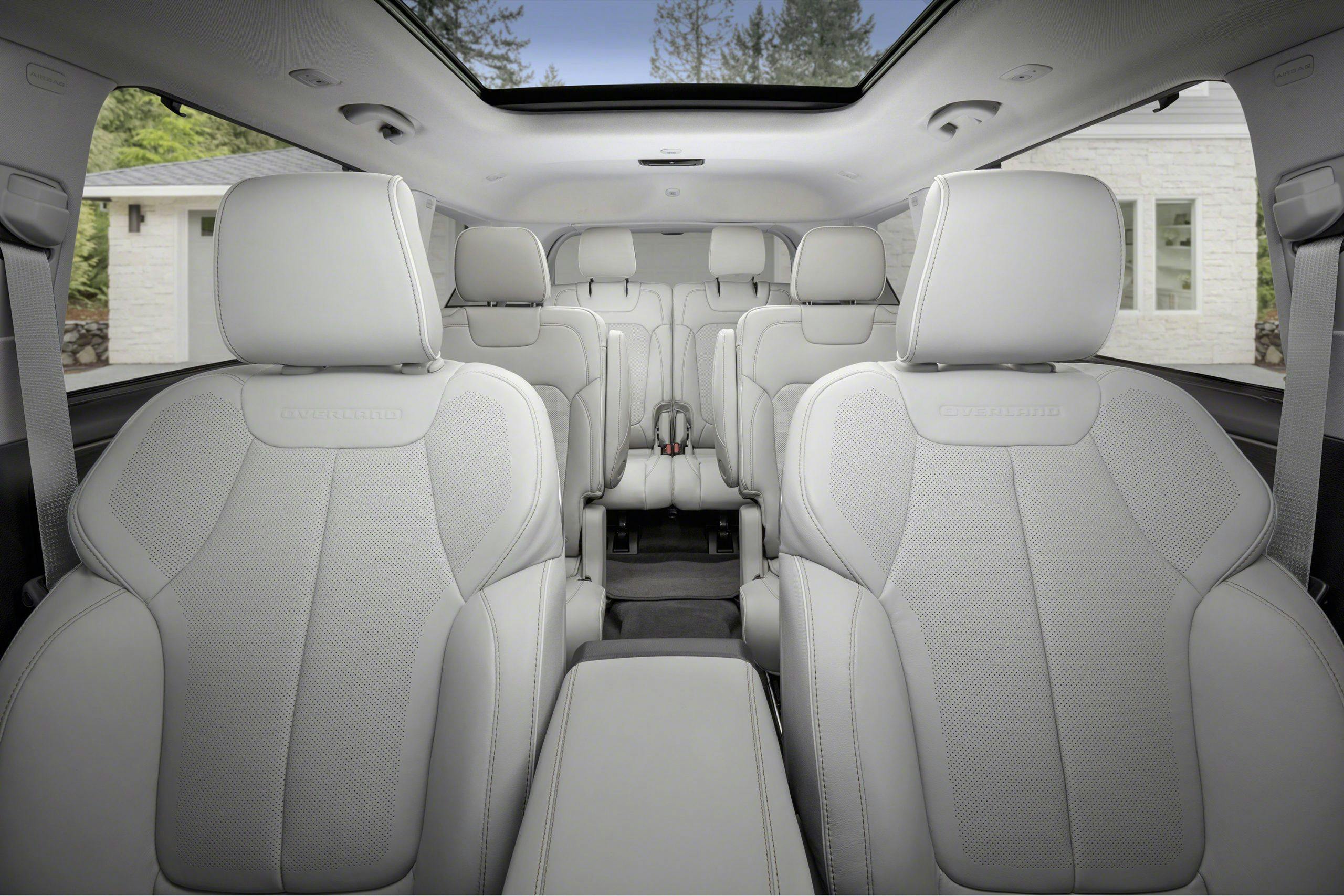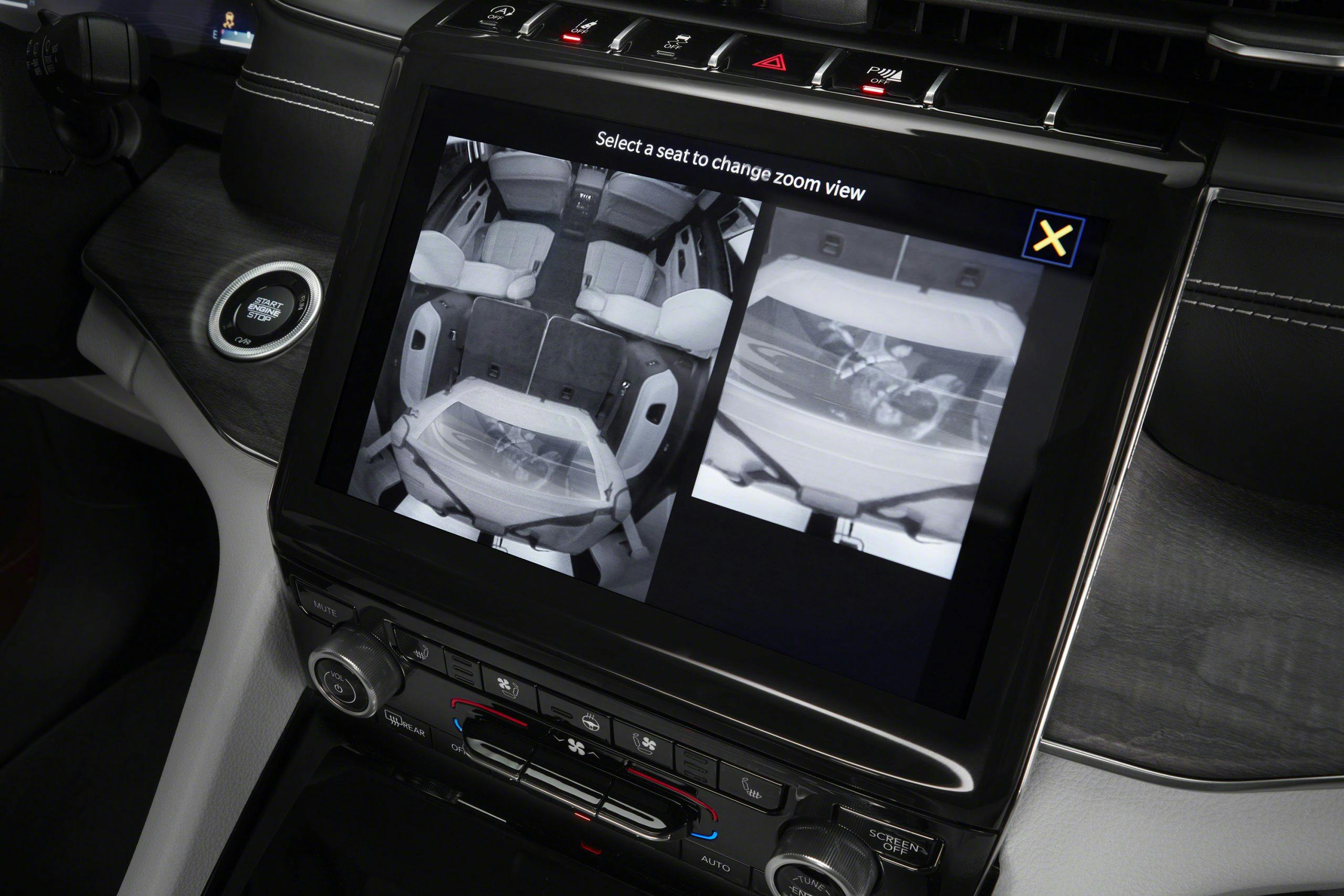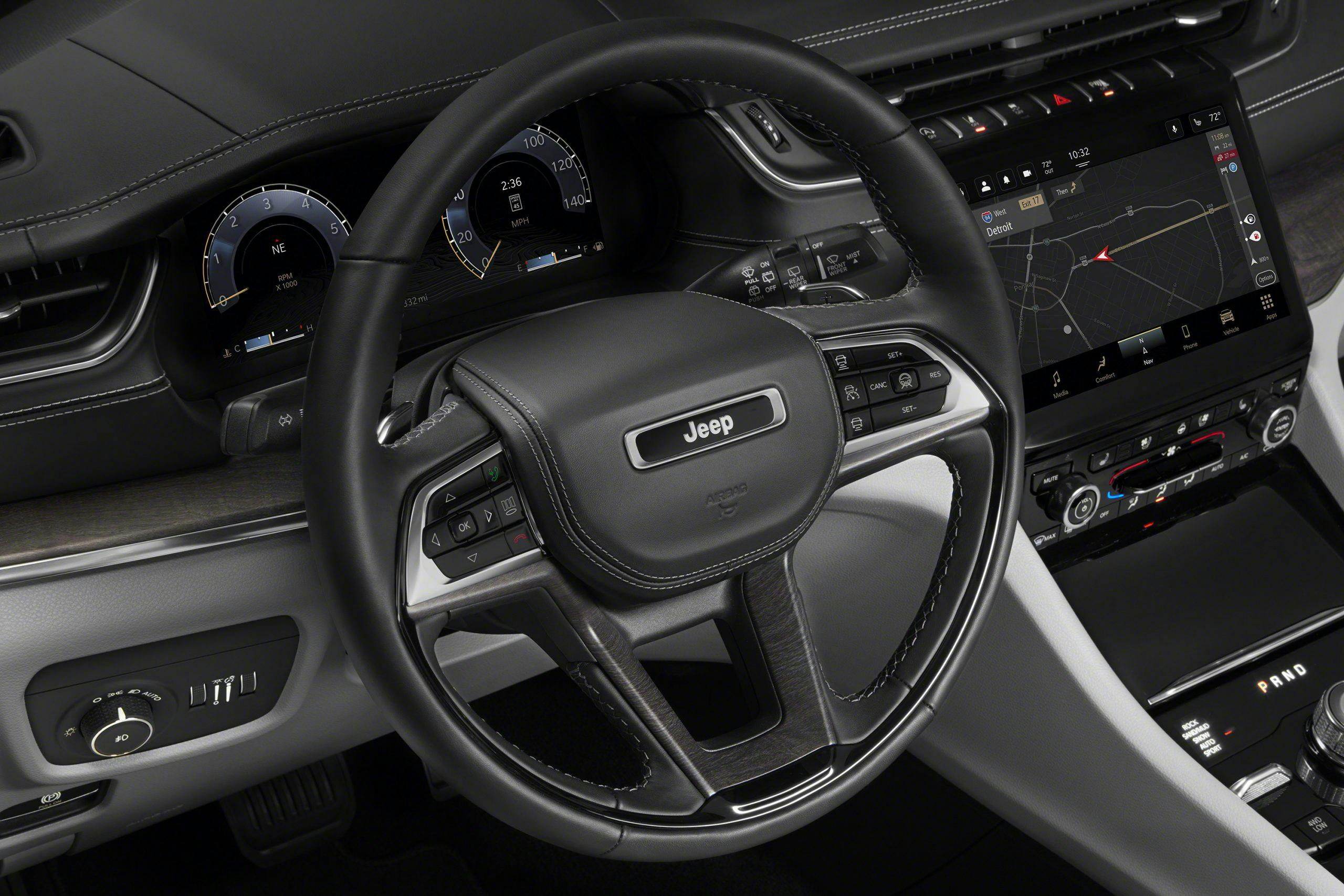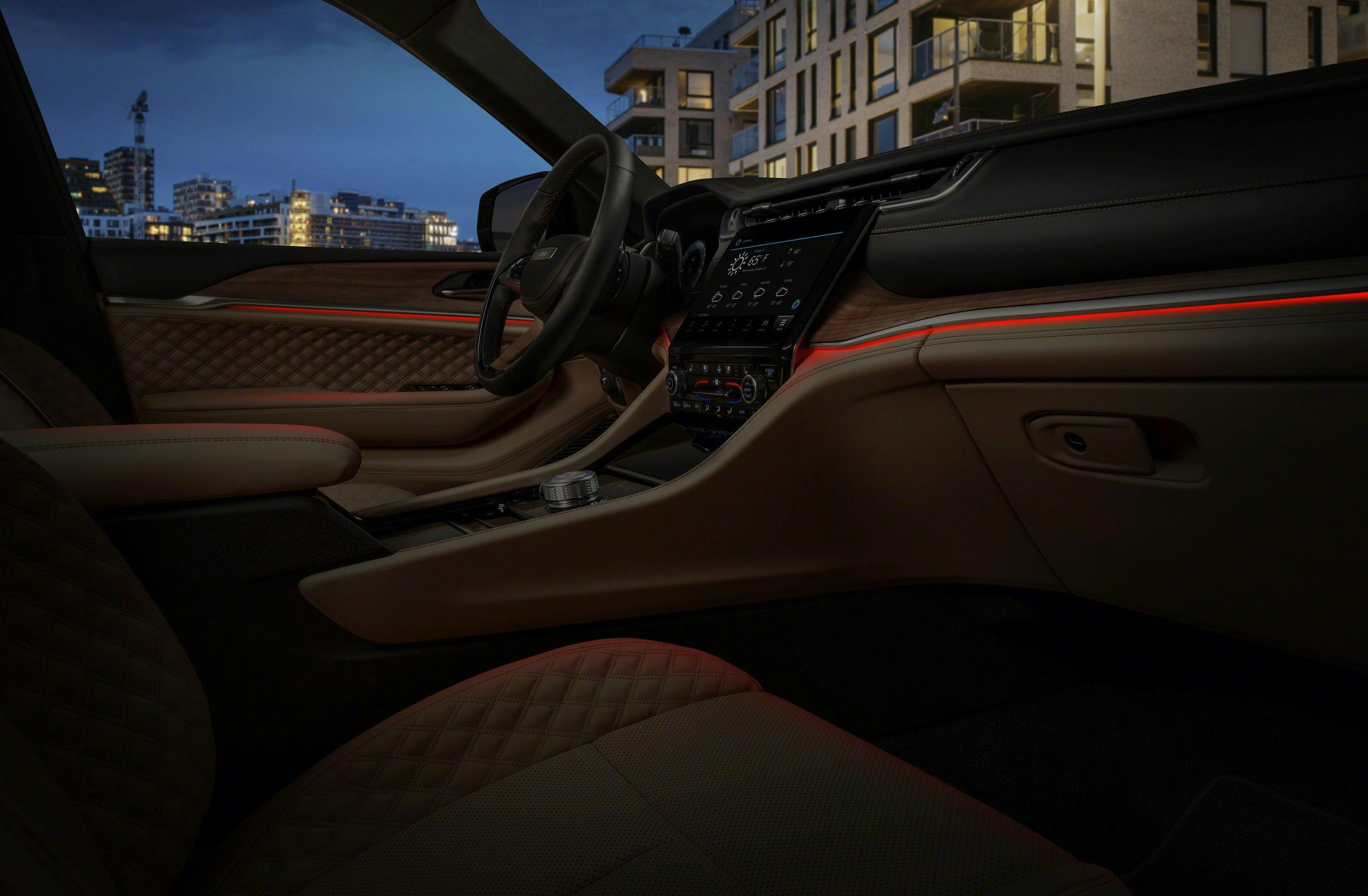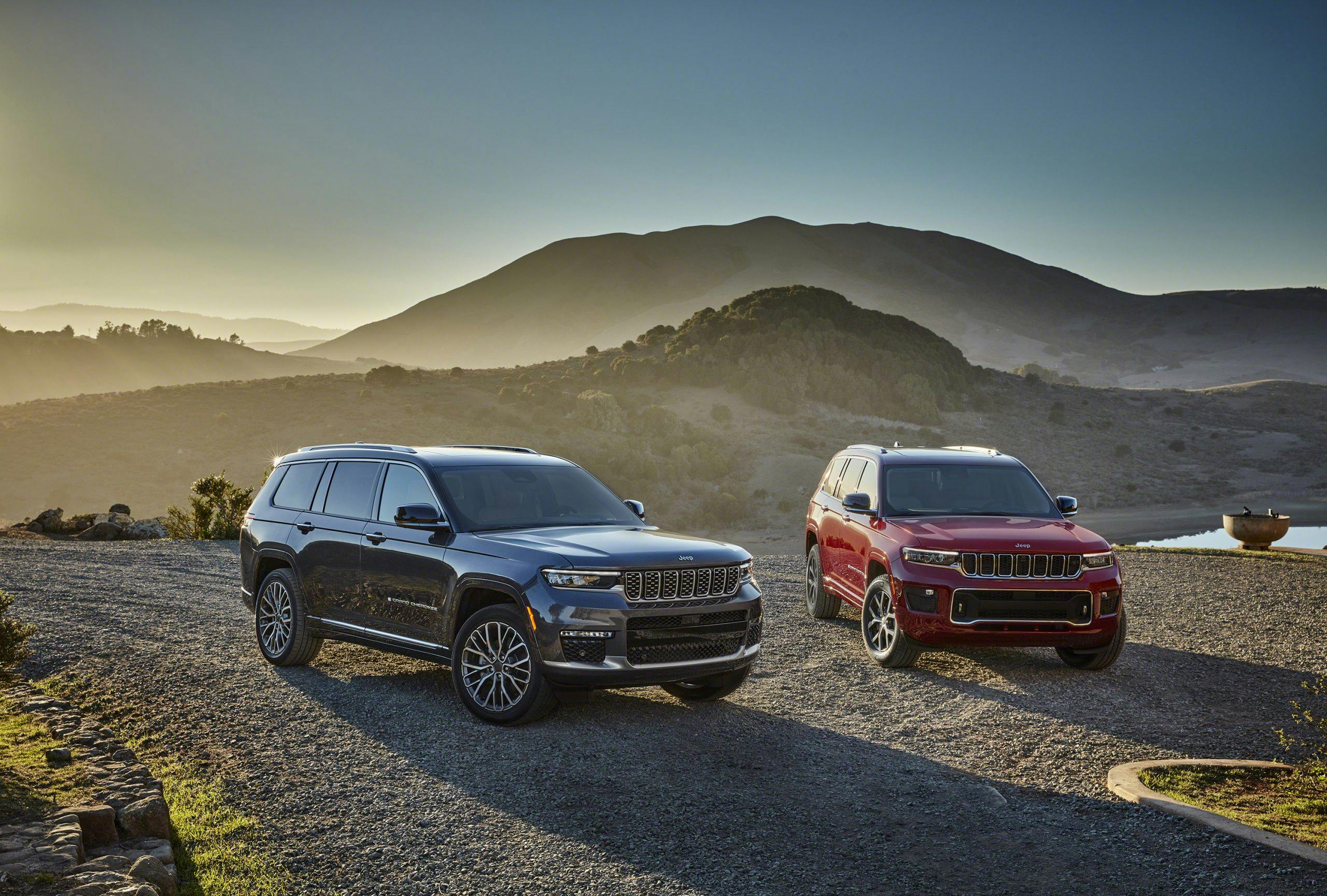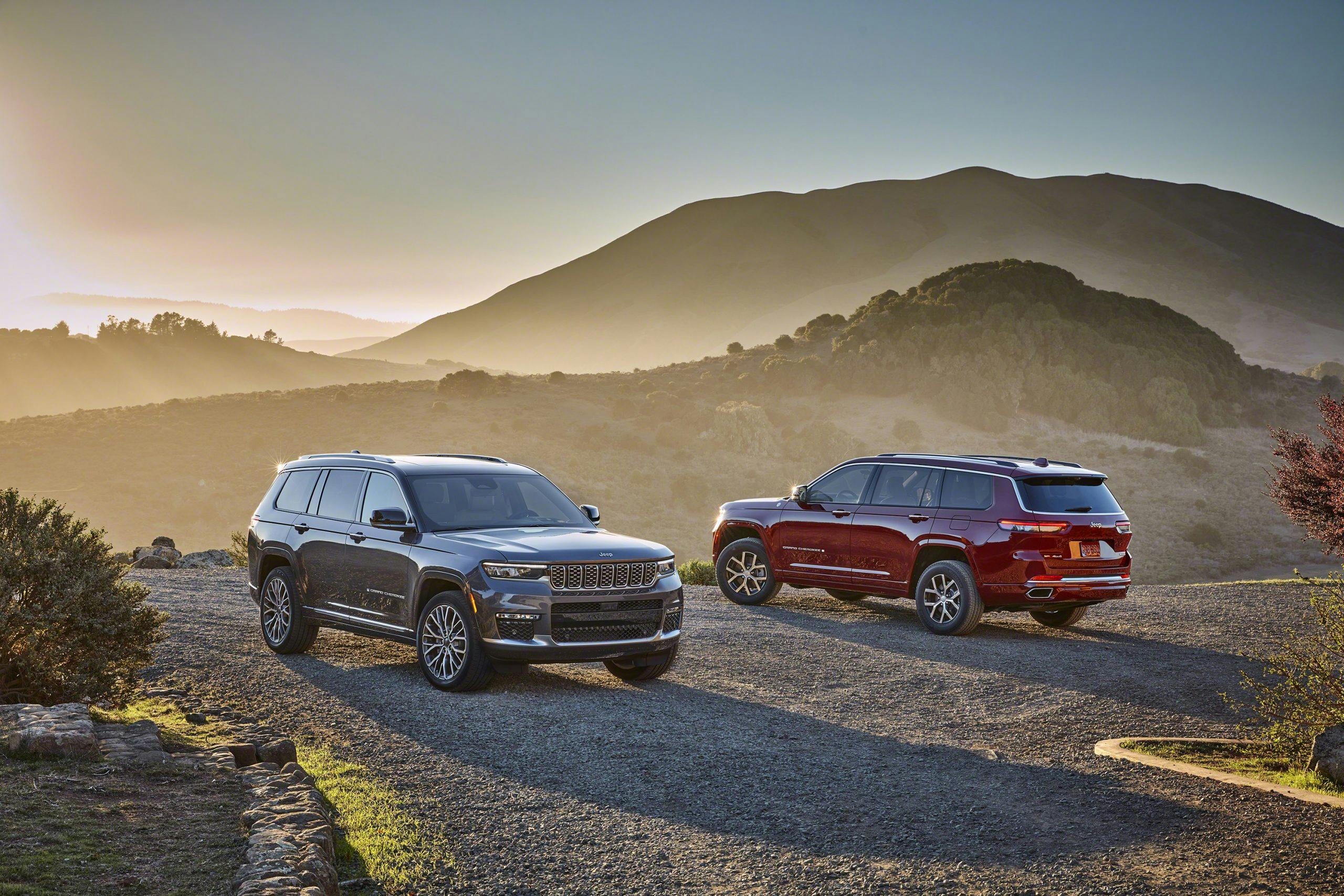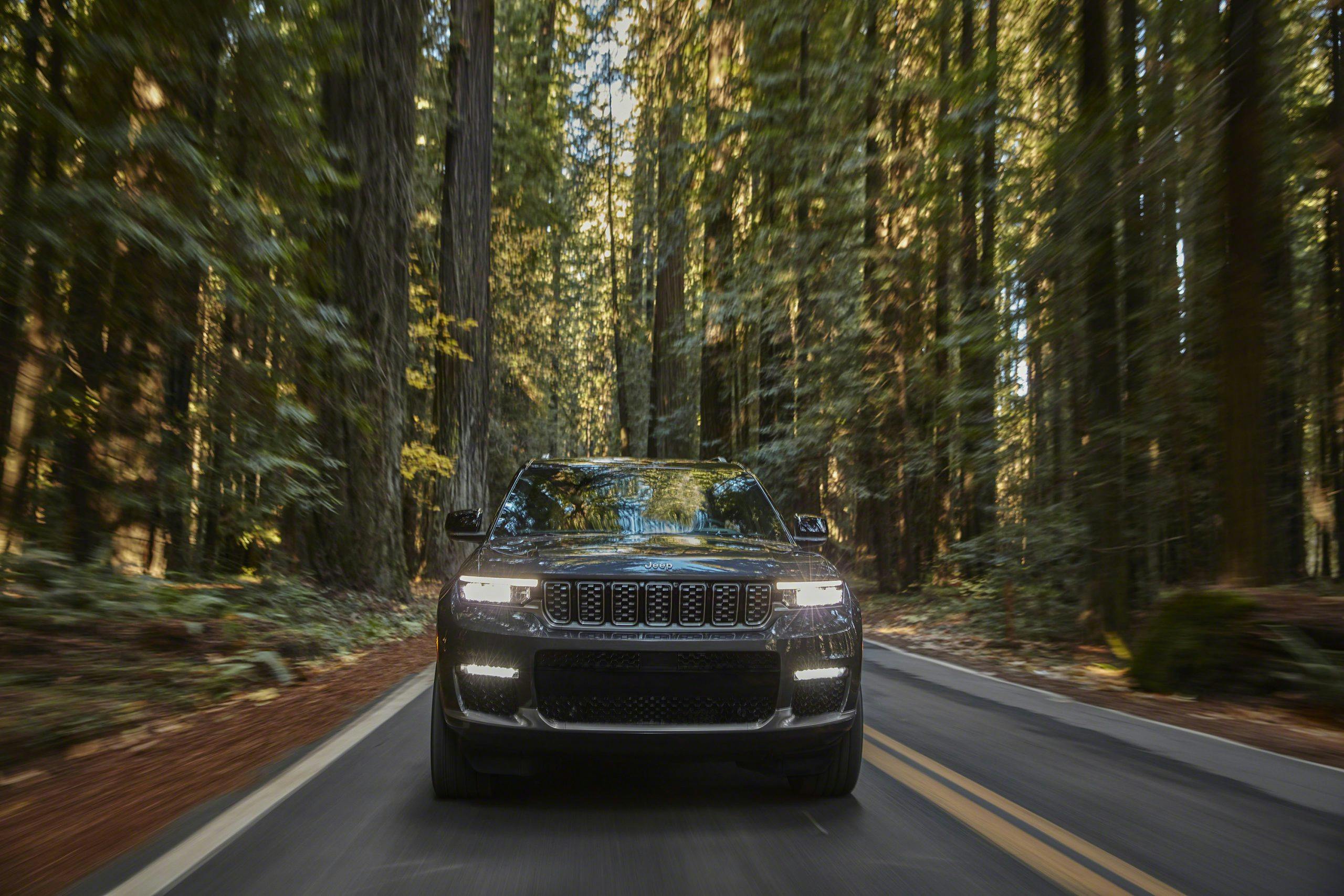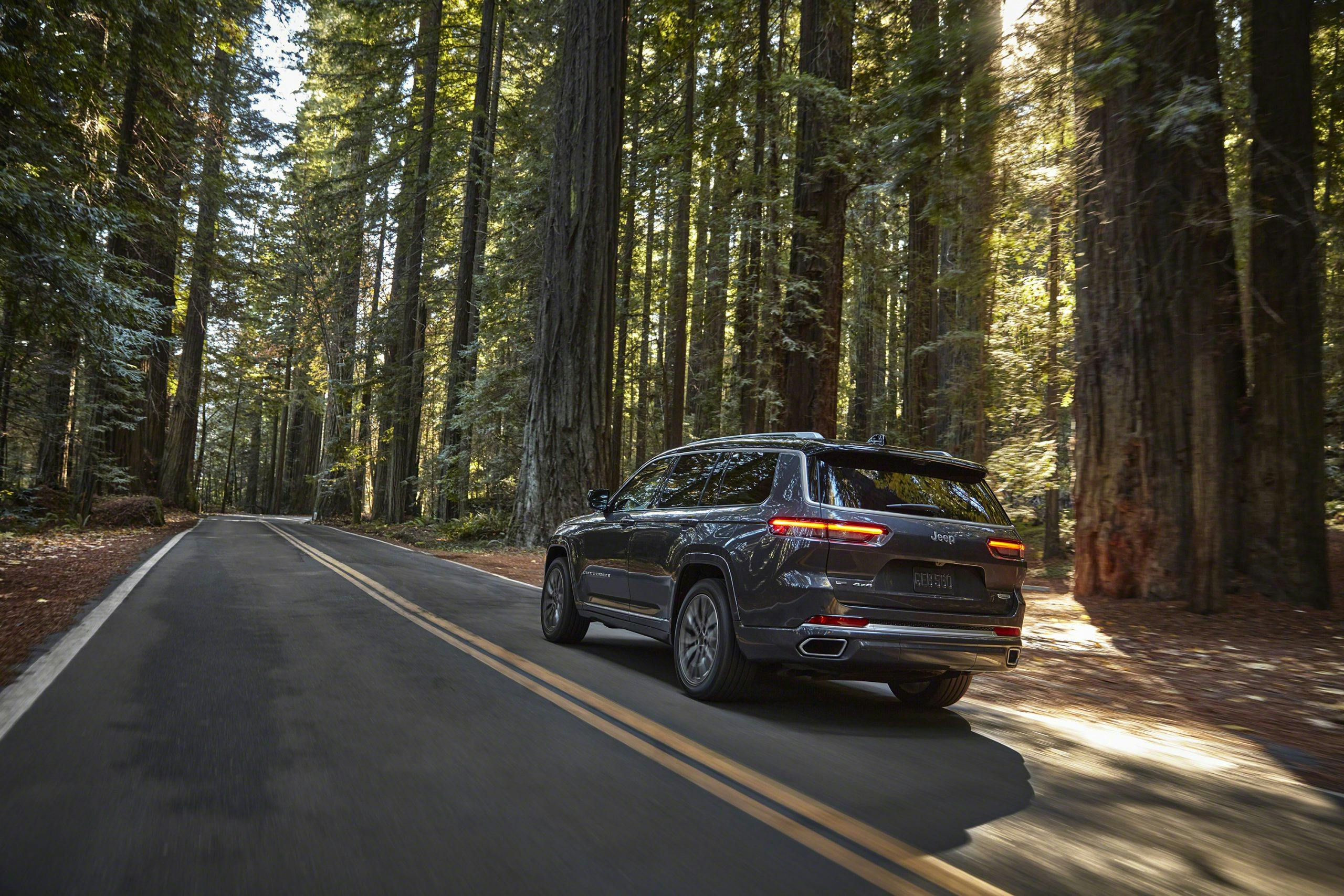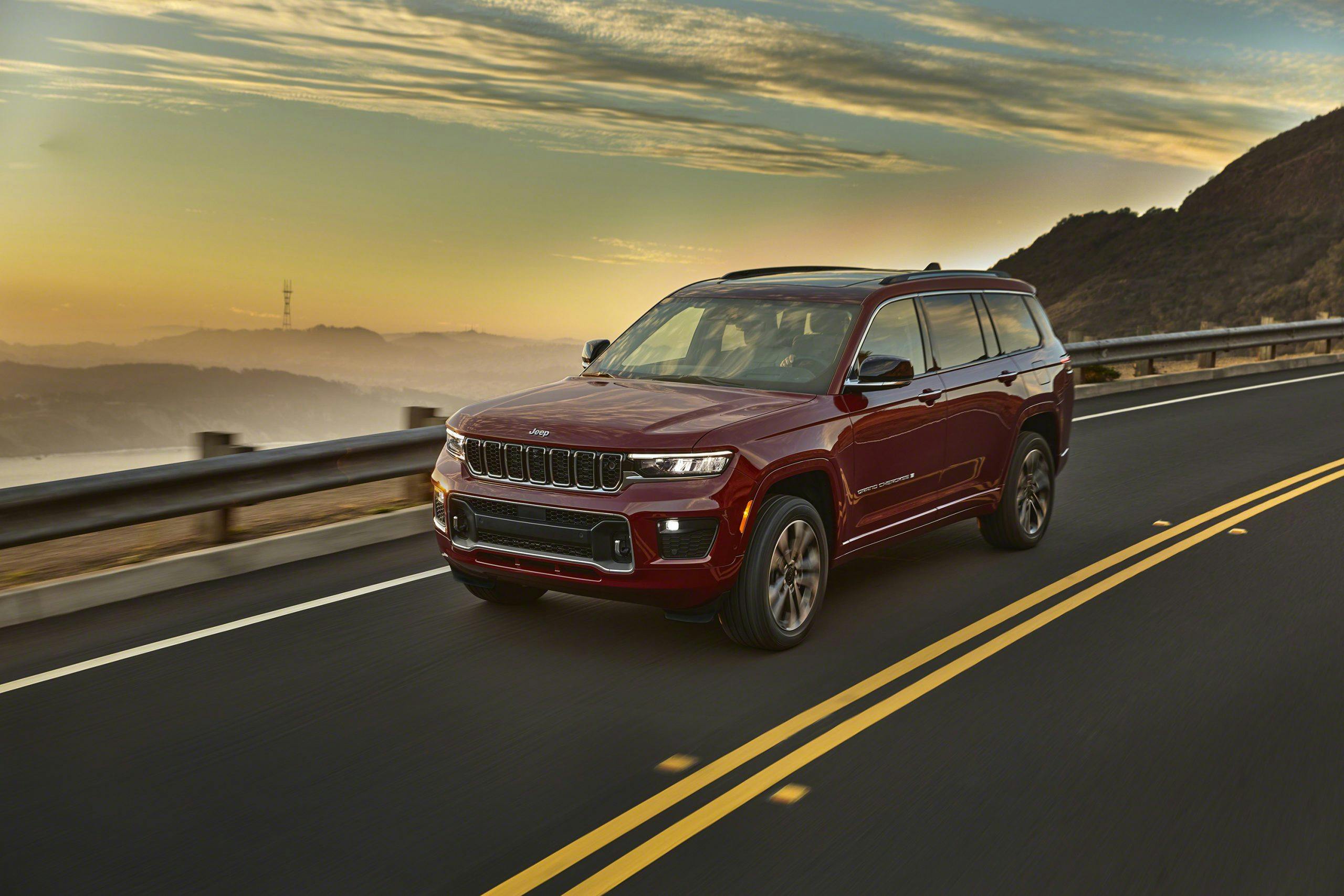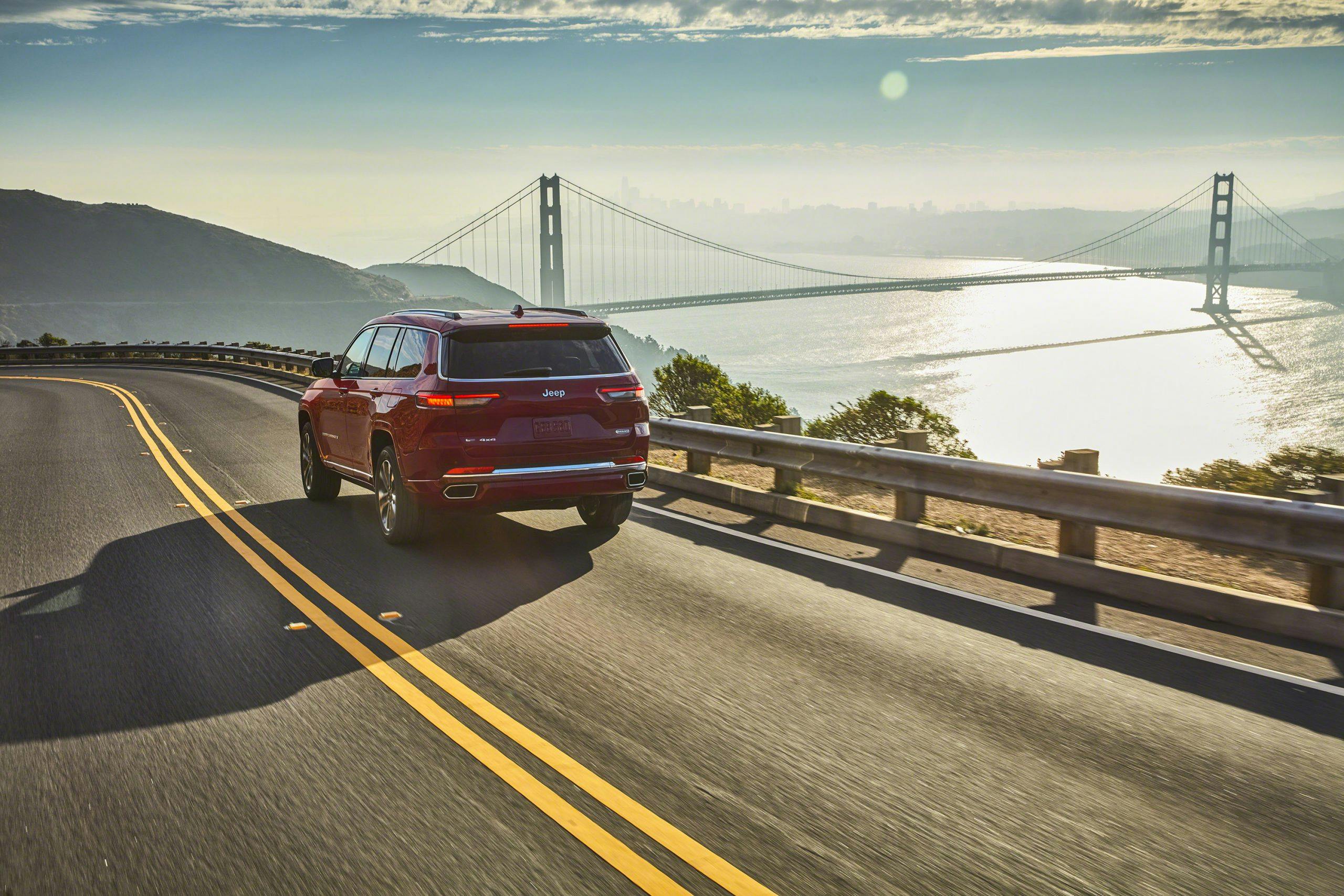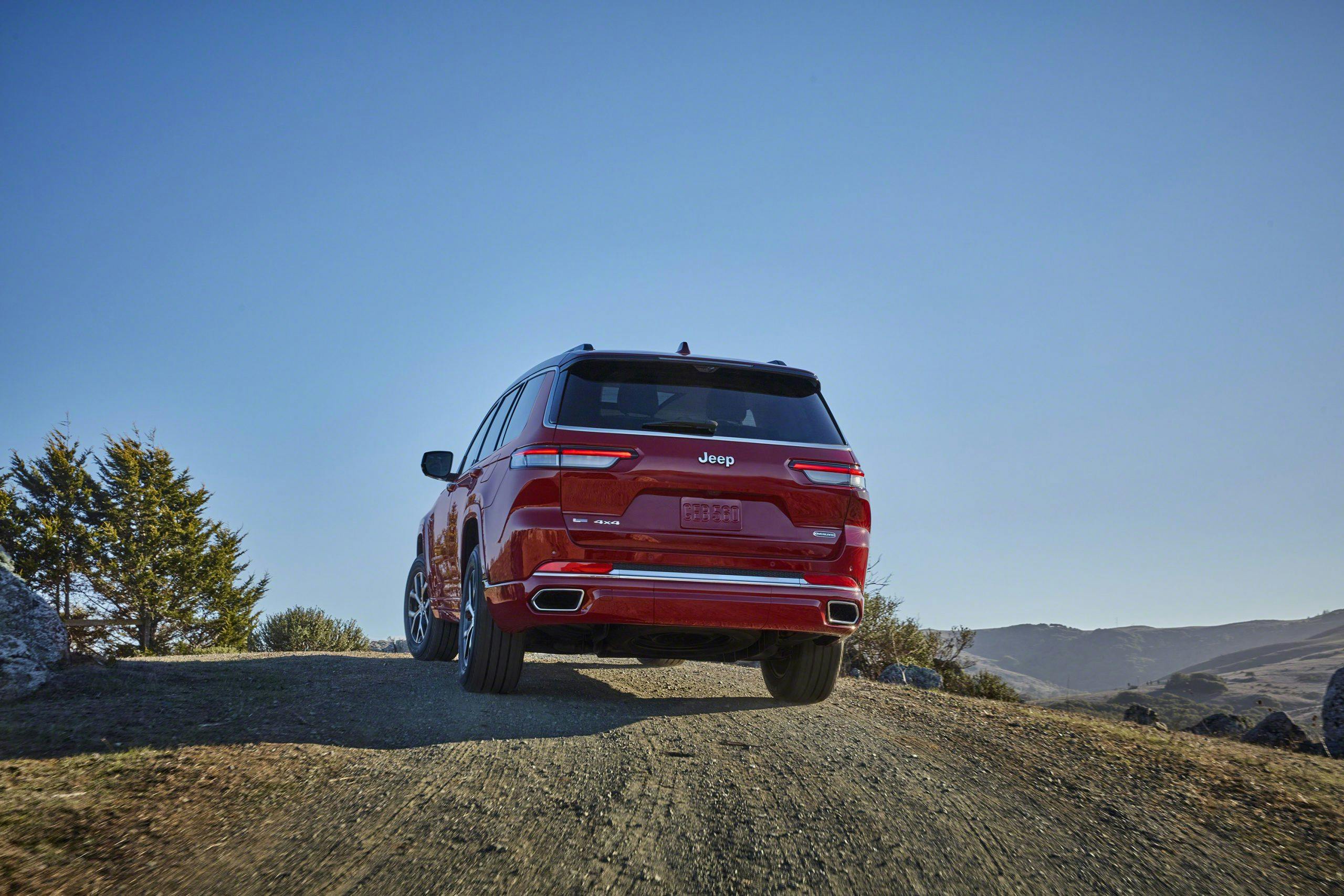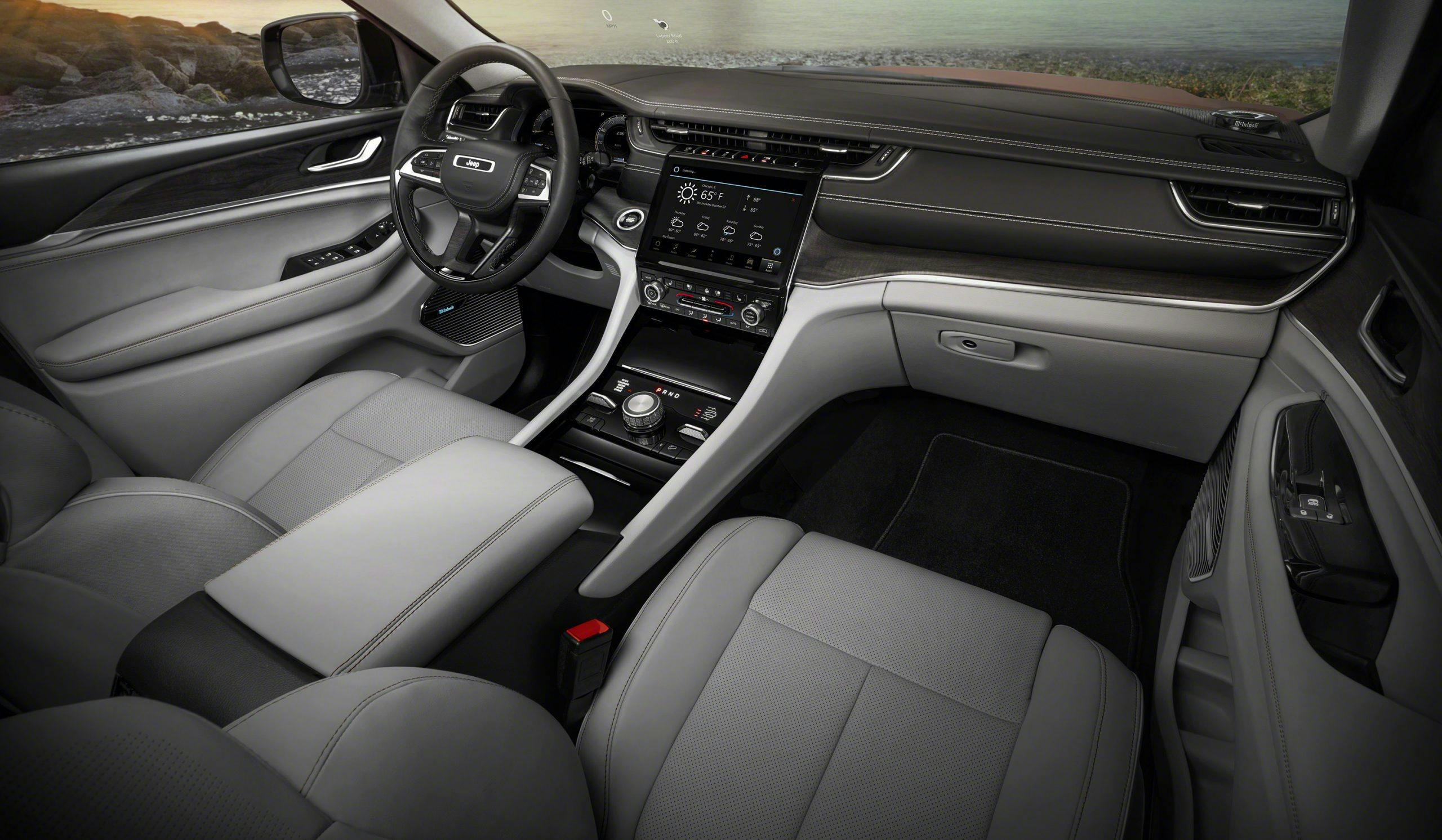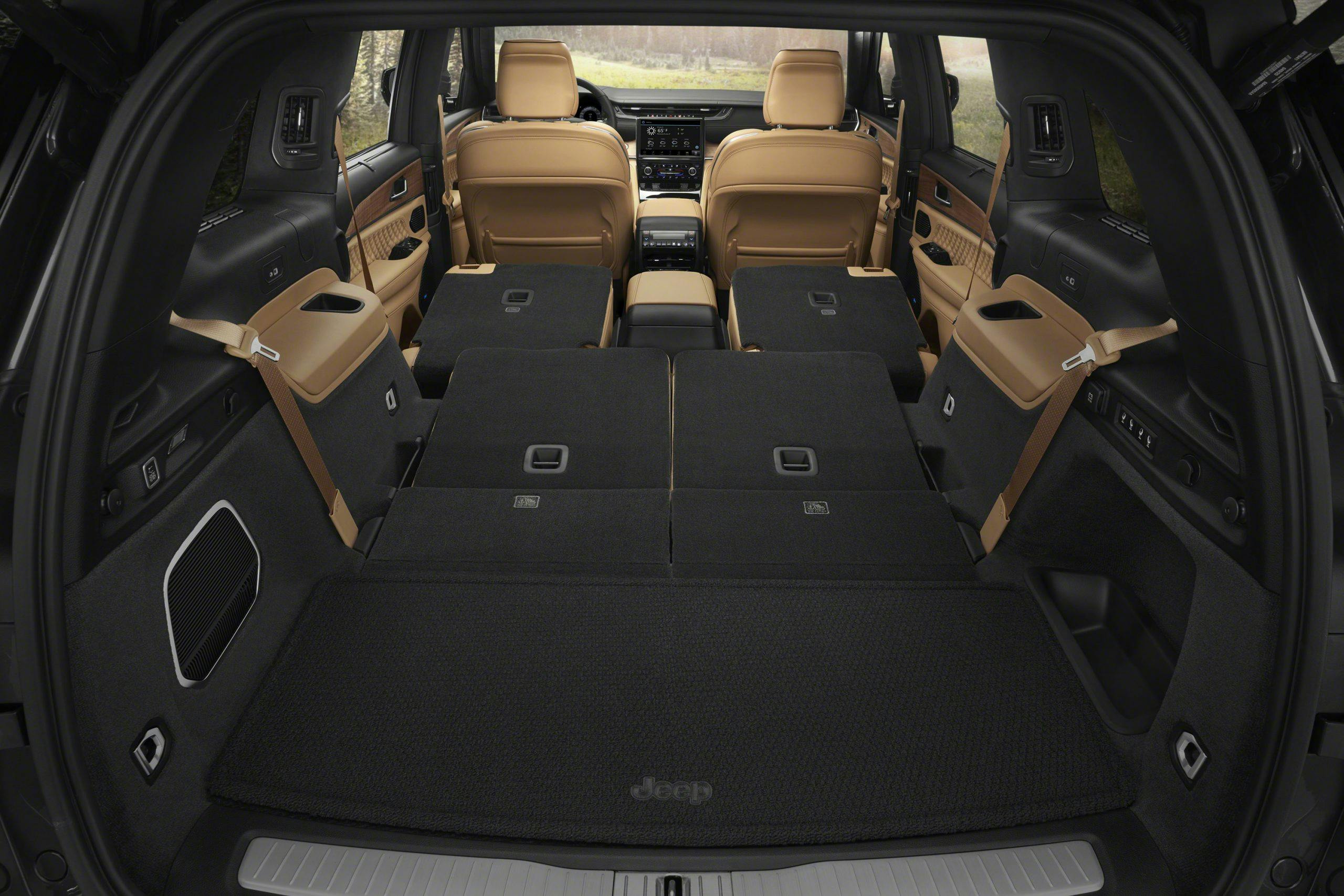Media | Articles
Jeep unveils new, three-row 2021 Grand Cherokee L
Jeep’s best-selling model is growing up, and not a moment too soon. Amidst a mid-size SUV battle that’s red-hot and getting hotter, the automaker just announced its next-generation Grand Cherokee. The big news? A new variant with, at long last, a third row of seating. (The “normal” two-row model, plus a hybrid version, will debut later this year.) The seven-seater will be called the Grand Cherokee L, and it’s aimed squarely at the Chevy Traverse and Ford Explorer.

As first impressions go, the new Grand Cherokee is promising. The SUV is handsome, free of fussy body lines. Compared to the current Grand Cherokee, the 2021 model is more upright, but the design evolution feels like a measured progression rather than a jarring case of punctuated equilibrium. As with the Grand Wagoneer concept, the seven-sectioned grille is canted slightly forward. Here, it features active shutters to alter airflow in the name of efficiency. The vehicle’s squared-off design and low beltline come courtesy of an all-new vehicle architecture.
You can have your Grand Cherokee L in one of four trims: Laredo, Limited, Overland (pictured in red), or the aptly-named Summit (pictured in grey), in ascending order of poshness. The Summit and Overland trims, in particular, seem stacked with every ritzy feature imaginable. Judging by the sheer amount of available options, we suspect the Grand Cherokee L is aiming further upmarket than just the Traverse or the Explorer—we’re getting major stealth-wealth vibes (especially with the range-topping Summit Reserve package), so don’t be surprised if one pops up in your country club parking lot.

This being a Jeep, there must be at least the potential for off-road shenanigans. To that end, the new Grand Cherokee L will offer three different 4×4 systems: Quadra-Trac I, Quadra-Trac II, and Quadra-Drive II. All three systems feature an active transfer case to shuffle torque front and back, depending on which axle can more effectively use it. Quadra-Trac I features a single-speed transfer case, while Quadra-Trac II offers a two-speed transfer case with a 2.72:1 low gear ratio. The top-shelf Quadra-Drive II includes the two-speed transfer case plus an electronic limited-slip rear differential. Quadra-Drive II will be optional on Overland 4×4 models as part of the Off-Road Group (which also nets you steel underbody armor and 18-inch wheels with all-season performance tires) and comes standard on all range-topping Summit models.
All Grand Cherokee Ls come with four-corner independent suspension. With the optional Quadra-Lift air suspension, owners can raise and lower their Grand Cherokee Ls up to 4.17 inches thanks to five different height settings: Normal, which offers 8.3 inches of ground clearance; Off-road 1, which offers 9.9 inches of ground clearance; Off-road 2, which brings 10.9 inches of ground clearance (and up to 24 inches of water fording depth); Park mode, which lowers the vehicle down to just 6.5 inches off the ground; and Aero mode, which drops the ride height to 7.5 inches to bolster fuel economy. Riding high in Off-Road 2, the Grand Cherokee L boasts approach, departure, and breakover angles of 30.1 degrees, 23.6 degrees, and 22.6 degrees, respectively.
Marketplace
Buy and sell classics with confidence
Jeep’s Selec-Terrain traction management system is included, as well. The five-mode system (Auto, Sport, Rock, Snow, Mud/Sand) acts as the nerve center for the driving experience, modulating everything from the steering to the throttle responsiveness to the shift mapping. Hill-descent Control comes standard on Overland and Summit models and does exactly what you’d expect. It works in both forward and reverse, too.
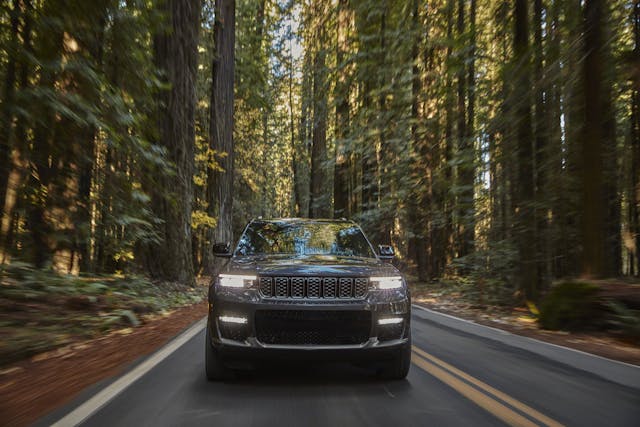
Buyers can choose from two powertrains: The ubiquitous 3.6-liter Pentastar V-6, or a 5.7-liter V-8. Ye olde Pentastar is good for 290 horsepower and 257 lb-ft of torque and a 6200-pound max towing capacity. The better news is the 5.7-liter V-8, available only on the Overland and Summit trims and good for 357 horsepower and 390 lb-ft of torque. This burly V-8 will bring a class-leading towing capacity of 7200 pounds. The only gearbox offered is—you guessed it—the TorqueFlite eight-speed automatic.
Inside, occupants will be swaddled in all manner of luxurious accoutrements. A slick metal accent stretches the width of the instrument panel, sweeping upward at either end as it nears the door. Overland and Summit trims enjoy nifty open-pore wood inserts on the dash and front doors. Massaging front seats are available in the Overland trim and standard on the Summit. Because just one or two temperatures won’t satisfy a herd of fussy kids, the Summit trim offers four-zone climate control.
There’s heaps of tech—useful tech, too. For the driver, a 10.25-inch digital cluster full of two dozen menus and a large heads-up display to keep pertinent information at eye-level with the road. For both driver and passenger, a 10.1-inch centrally-mounted touchscreen to manage all infotainment duties including the important things like the wireless Apple CarPlay and Android Auto. Audiophiles can opt for the Overland or Summit trims and spec the 950-watt, 19-speaker McIntosh audio system.
You have a choice of two captain’s chairs or a single bench seat in the third row. With the 50/50-folding third row laid down, there’s 46.9 cubic feet of storage; fold the second row flat too, and you’ll get 84.6 cubic feet of gear-swallowing capacity. You’re more likely to need those seats for child stowage, however, which makes Jeep’s rear-seat-monitoring camera a thing of beauty for concerned parents worried about their spawn quarreling on the way to the next national park. If you reach mission critical, you can plug Jimmy’s tablet into one of twelve USB Type A or Type C ports located around the rear cabin.
You’re forgiven if you’re getting flashbacks to the Grand Wagoneer concept unveiled last fall; we thought the same thing. Nevertheless, Jeep assures us that while the two rides may share some of the same boxy design language, these are two separate vehicles built on their own platforms to serve different sets of customers.
“We are confident Wagoneer will make ‘American Premium’ the standard of sophistication, authenticity, and modern mobility,” says a Jeep spokesperson. A helpful point of delineation: The Grand Wagoneer is expected to be a body-on-frame vehicle (likely utilizing the Ram 1500 frame), while the Grand Cherokee L rides on a steel unibody frame. To draw another parallel, expect this to play out something like the Chevy Tahoe and the Chevy Traverse.
The Grand Cherokee L will be built in FCA’s new Mack Assembly plant right in Detroit. Jeep says the first units will arrive in dealer showrooms the second quarter of 2021. As of this writing, Jeep made no mention of pricing for the Grand Cherokee L, but we expect the price to vary significantly based on which trim level you specify. The debut of the two-row Grand Cherokee and its 4xe electrified powertrain will arrive later this year.
When you aren’t first—or even mid-pack—you better bring it in this fiercely contested segment. By the looks of it, Jeep came ready to battle.
